
Guatemala City cover page. |
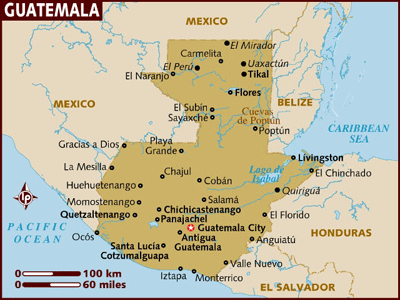
Map of Guatemala with the star indicating Guatemala City. |
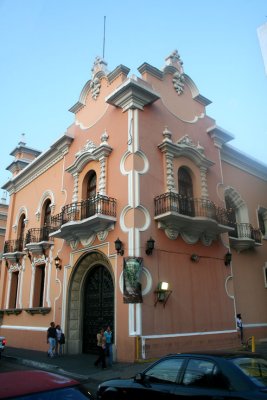
The main post office (El Correo) was constructed during General Jorge Ubico's administration (1937-1940). |

It's eclectic style is characteristic of the Ubico Period with Guatemalan colonial architectural elements. |
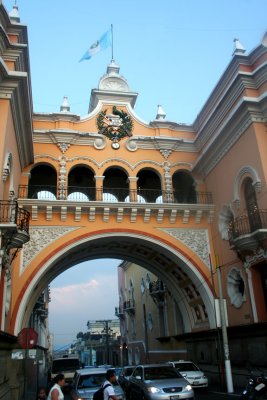
The Arch of Santa Catalina is an Antigua-inspired pedestrian bridge connecting the post office with another building. |
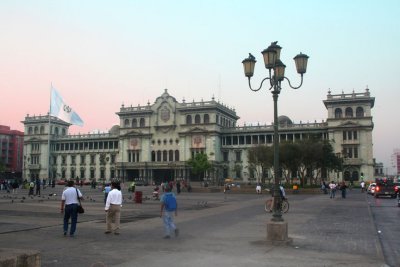
View of the Palacio Nacional (National Palace) in Plaza Mayor de la Constitución (also called Parque Central) in Guatemala City. |

View of a fountain in Plaza Mayor in front of the National Palace. |
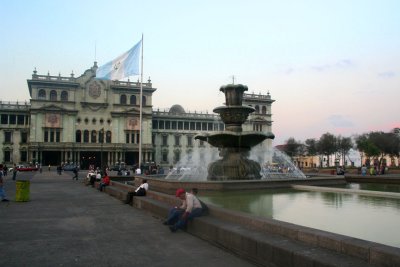
Also constructed during the Ubico administration, the National Palace contains beautiful murals and stained glass windows. |
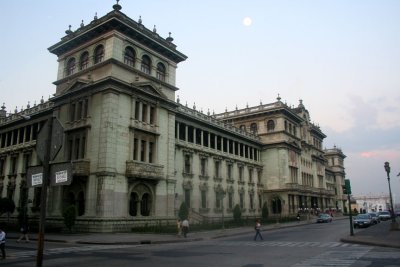
The National Palace was the first building in Guatemala City built with an anti-seismic system. |

Since it was late in the day, these soldiers were taking down the Guatemalan flag in front of the National Palace. |

Each soldier took an end of the flag. |
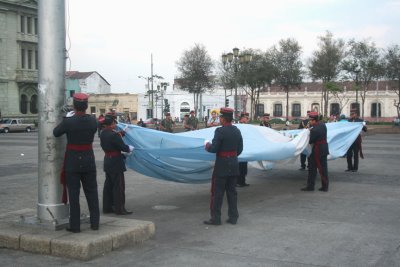
Then, they carefully folded it in a ritualistic fashion. |
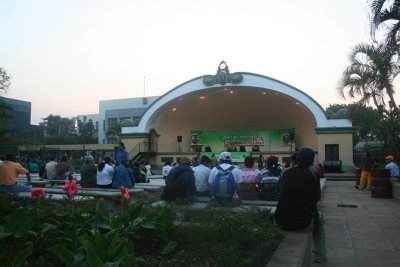
This bandstand is located in Centennial Park half a block away from Plaza Mayor. A concert was about to take place. |
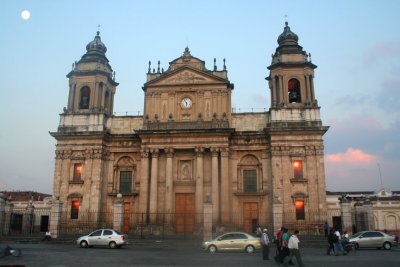
View of the Metropolitan Cathedral at dusk in Plaza Mayor. |
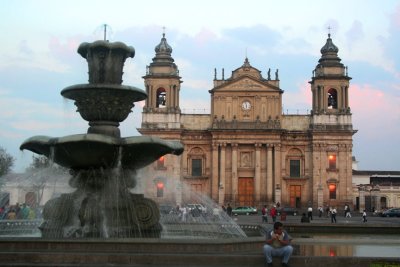
View of the cathedral with the Plaza Mayor fountain in the foreground. |
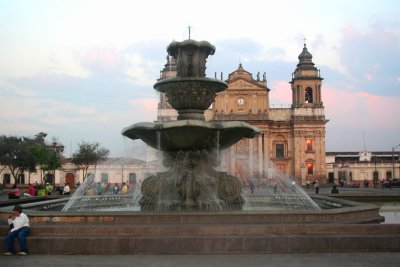
The original fountain was installed in 1789. The current fountain was designed by the sculptor Rudolpho Galeotti Torres. |
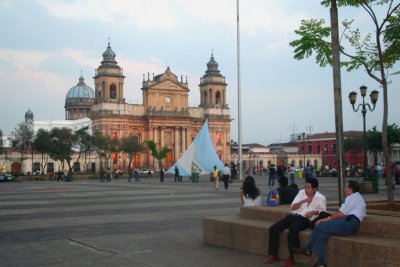
The neoclassical Metropolitan Cathedral was inaugurated with a sacred mass on the eve of Sacred Thursday, 1815 |

Side view of the cathedral at dusk with the moon overhead. |
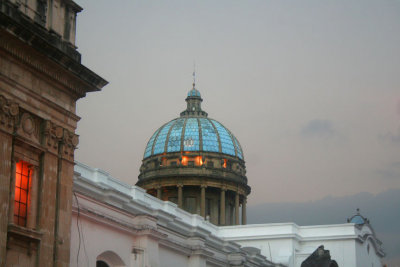
View of the dome behind Metropolitan Cathedral in Guatemala City. |
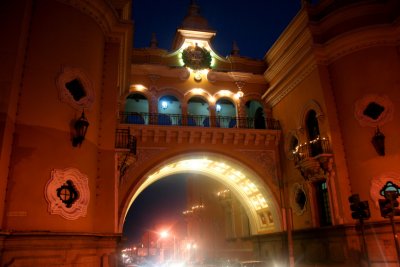
On my way back to the inn where I was staying, I passed by the Arch of Santa Catalina again and got this photo of it at night. |
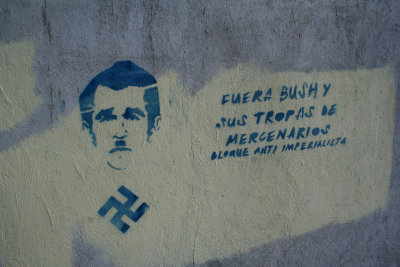
Graffiti of George Bush in Guatemala City. He was arriving there the following week. |
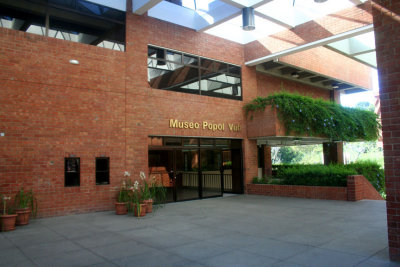
I took a taxi to the Popol Vuh Museum located at the campus of Universidad Francisco Marroquín in Guatemala City. |
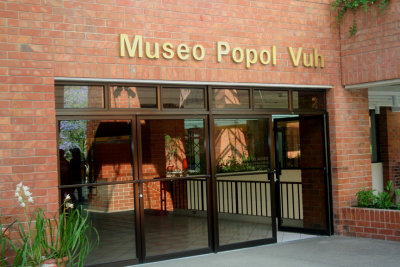
It has an excellent collection of archaeological items from the pre-Hispanic Mayan world and a collection of colonial items. |
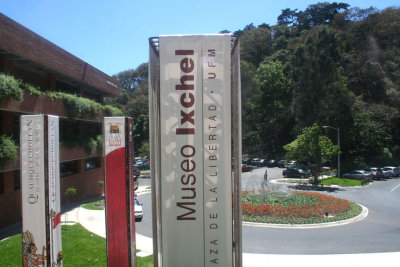
The Ixchel Museum is located right next to the Popol Vuh Museum in Guatemala City. |

It has a large collection of traditional costumes and information on weaving and dying techniques. |
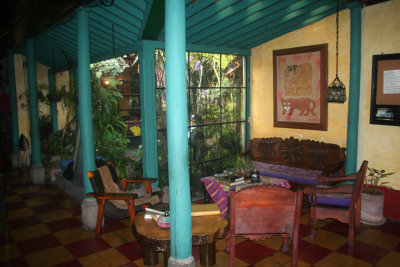
I stayed in a wonderful inn in Guatemala City called the Posada Belen. |

The dining room of the Pasada Belen. It originally was a colonial home (built in 1873) that was converted into an inn. |
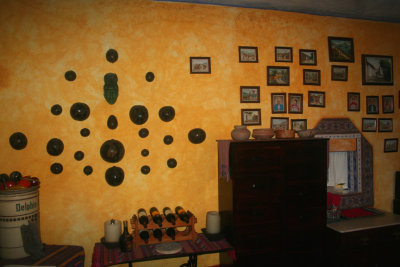
The Posada Belen has a wonderful ambiance. It is also filled with museum-quality Guatemalan artifacts. |

The Posada Belen also has an interior garden where one can sit and relax. |
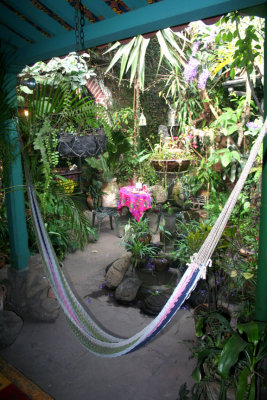
View of the hammock in the Posada Belen's garden. |

This was my bedroom at the Posada Belen with its Guatemalan decor. |











